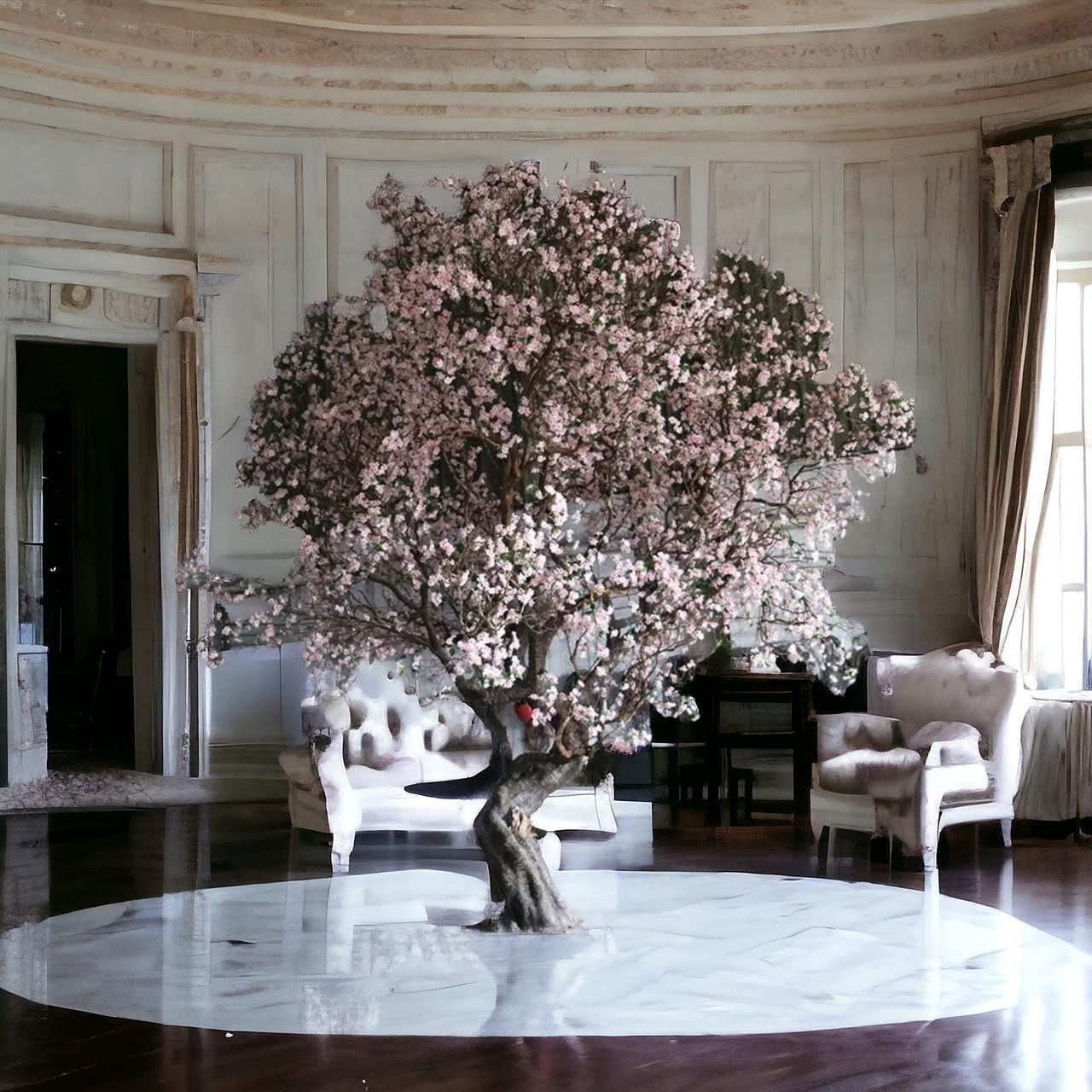Is Freelance Architecture Redefining the Industry's Future?
Aug 09, 2024
Is Freelance Architecture Redefining the Industry's Future?
The architecture profession, long defined by its structured hierarchies and traditional firm-based practices, is on the brink of a significant transformation. With the rise of the gig economy, the increasing prevalence of remote work, and the growing importance of personal branding, the concept of freelance architecture is emerging as a viable and attractive career path. But is this shift merely a temporary trend, or could it fundamentally redefine the future of the architecture industry?
In this comprehensive exploration, we'll delve into how freelance architecture is changing the profession, addressing the challenges it presents, and considering the potential benefits it offers to both architects and the broader industry. We'll also examine how architectural education and technology are aligning with this new model, and what the future might hold for freelance architects.
The Rise of Freelance Architecture
The COVID-19 pandemic has had far-reaching effects on various industries, and architecture is no exception. One of the most significant changes has been the acceleration of the freelance workforce in the United States, which has grown by 22% in recent years. This growth reflects broader trends such as the normalization of remote work, the appeal of the digital nomad lifestyle, and the increasing emphasis on personal branding.
Freelancing, once seen as a stopgap measure or a side hustle, is now considered a legitimate and often preferable career choice in many professions. It offers flexibility, autonomy, and the potential for higher earnings, all of which are increasingly valued in today's work culture. For architects, who have traditionally worked within the confines of firm structures, freelancing represents both an opportunity and a challenge.
Challenges in the Traditional Architectural Profession
To understand why freelance architecture is gaining traction, it's essential to consider the challenges inherent in the traditional architectural profession. These challenges have been a topic of discussion among architecture students and professionals for years.
- Low Salaries and Long Hours: Architecture is known for its demanding nature, with long hours often required to meet tight project deadlines. Despite this, salaries for architects, particularly those just starting, have historically been lower than in other professions requiring similar levels of education and expertise. This disconnect between effort and reward is a significant source of frustration for many young architects.
- Competitive Working Environments: Architectural firms, especially in large urban areas, are highly competitive. The pressure to produce innovative designs, win prestigious projects, and maintain a strong reputation can create a high-stress environment. For many architects, this competitiveness leads to burnout and a sense of disillusionment with the profession.
- Lack of Creativity in Entry-Level Positions: One of the most common complaints among young architects is the lack of creative freedom in entry-level positions. In many firms, the creative aspects of a project—such as conceptual design and early-stage development—are typically handled by more senior architects. Junior architects often find themselves relegated to more repetitive tasks, such as drafting and technical detailing, which can stifle their creativity and diminish their passion for the field.
These challenges have led many architects to question the traditional firm-based model of practice and to seek out alternative ways of working. Freelance architecture, with its promise of greater autonomy and creative freedom, has become an appealing option for those disillusioned with the status quo.
The Appeal of Freelance Architecture
Freelancing offers several advantages that address some of the key challenges faced by architects in traditional practice. Here are some of the main reasons why freelance architecture is becoming increasingly popular:
- Flexibility and Work-Life Balance: One of the most significant benefits of freelancing is the flexibility it offers. Freelance architects can set their schedules, choose the projects they want to work on, and work from anywhere in the world. This flexibility can lead to a better work-life balance, which is particularly appealing to those who have experienced burnout in traditional firm environments.
- Creative Control: Freelance architects often have more creative control over their work. They are not bound by the hierarchical structures of a firm, which means they can be involved in all aspects of a project, from initial concept development to final execution. This level of involvement can be highly rewarding and allows architects to explore their creative potential fully.
- Diverse Opportunities: As freelancers, architects are not tied to a single employer or type of project. They have the freedom to take on a wide range of projects, from residential to commercial to experimental. This diversity of work can lead to a more varied and fulfilling career, as well as the opportunity to build a unique and personal portfolio.
- Potential for Higher Earnings: While freelancing can be unpredictable, it also offers the potential for higher earnings, particularly for architects who establish a strong reputation and client base. By setting their rates and taking on multiple projects, freelance architects can potentially earn more than they would in a salaried position.
The Intersection of Freelance Architecture and Architectural Collectives
As freelance architecture gains momentum, another trend is emerging: the rise of architectural collectives. These collectives are an innovative form of limited companies that are owned and operated by their employees. Unlike traditional firms, which are often hierarchical, architectural collectives emphasize collaboration, shared ownership, and a non-hierarchical approach to design and project management.
Architectural collectives share several similarities with freelance architecture, particularly in their emphasis on ownership and accountability. In both models, architects are responsible for all aspects of a project, from the creative to the technical to the contractual. This holistic approach encourages architects to take ownership of their work and to be fully engaged in the creative process.
Collectives also align with the freelance model in their focus on collaboration and communication. In a collective, architects work together as equals, without the rigid hierarchies that can stifle creativity in traditional firms. This collaborative approach fosters a dynamic exchange of ideas and allows for a more fluid and adaptable design process.
While architectural collectives and freelance architecture are not the same, they represent a shift away from the traditional firm-based model and toward a more flexible, egalitarian approach to architectural practice. Both models prioritize creativity, collaboration, and ownership, making them attractive alternatives for architects seeking a different way of working.
The Role of Architectural Education
As the architecture industry evolves, so too must architectural education. One of the key debates in the field is whether current educational models adequately prepare students for the realities of professional practice. Critics argue that many architecture programs focus too heavily on design theory and not enough on the practical skills needed in the industry, such as construction knowledge, contract management, and site documentation.
However, it is essential to recognize that architecture is a multifaceted discipline that requires both creative and technical expertise. While practical skills are undoubtedly important, they should not come at the expense of creative thinking and design innovation. Architectural education should encourage students to experiment, explore, and develop their unique approaches to design, rather than simply equipping them with textbook knowledge.
In this context, the rise of freelance architecture offers an exciting opportunity for architectural education to evolve. The studio culture that is prevalent in many architecture schools—characterized by collaborative work, open communication, and a lack of rigid hierarchies—mirrors the freelance model in many ways. By fostering a non-hierarchical exchange of ideas and encouraging students to take ownership of their projects, architectural education can better prepare students for the realities of freelance work.
Moreover, the emphasis on collaboration and communication in architectural education aligns with the principles of architectural collectives. As more architects explore alternative models of practice, education must adapt to prepare students for these new possibilities. By teaching students to work collaboratively, think creatively, and take ownership of their work, architectural education can play a crucial role in shaping the future of the profession.
Technology and the Freelance Architecture Movement
Technology is another key factor driving the rise of freelance architecture. In recent years, advances in digital tools and platforms have made it easier than ever for architects to work independently, collaborate remotely, and manage their projects from start to finish. These technological innovations are transforming the way architects work and opening up new possibilities for freelance practice.
- Digital Design Tools: The proliferation of digital design tools, such as Building Information Modeling (BIM) software and 3D modeling programs, has made it easier for architects to develop and communicate their ideas. These tools allow architects to create detailed, accurate designs that can be easily shared with clients and collaborators. For freelance architects, who may not have access to the same resources as a large firm, these tools are essential for managing projects and delivering high-quality work.
- Remote Collaboration Platforms: The rise of remote work has led to the development of collaboration platforms that allow architects to work together from different locations. Tools like Slack, Zoom, and Trello enable architects to communicate in real-time, share files, and manage tasks, making it possible to collaborate on projects without being in the same physical space. For freelance architects, these platforms are invaluable for building networks, finding collaborators, and managing projects efficiently.
- Open-Source Platforms: One of the most exciting developments in the architecture industry is the emergence of open-source platforms that democratize access to knowledge and resources. These platforms allow architects to share their work, from detailed drawings to contracts to early conceptual sketches, with a broader community. This open exchange of information makes it easier for freelance architects to access the resources they need to succeed, regardless of their level of experience.
- Cloud-Based Storage and Project Management: Cloud-based storage solutions have become a game-changer for freelance architects, allowing them to store all their project files securely and access them from anywhere. These platforms also offer project management tools that help architects keep track of deadlines, manage budgets, and collaborate with clients and team members. The ability to work from any location with just a laptop and an internet connection has made the freelance model more viable than ever.
Potential Challenges and Criticisms
While freelance architecture offers many benefits, it is not without its challenges and criticisms. One of the most significant concerns is the potential for job insecurity and financial instability. Freelancing can be unpredictable, with income varying widely from month to month. Architects who choose to freelance must be prepared for the possibility of inconsistent work and fluctuating earnings.
Another challenge is the potential lack of support and mentorship for freelance architects, particularly those just starting. In a traditional firm, junior architects often have the opportunity to learn from more experienced colleagues, gaining valuable insights and skills. Freelancers, on the other hand, may have to navigate the complexities of the profession on their own, without the same level of guidance and support.
There is also a concern that the rise of freelance architecture could lead to a devaluation of the profession. As more architects enter the freelance market, there is a risk that competition could drive down prices, making it more difficult for architects to earn a fair wage. Additionally, some critics argue that freelance architects may not have the same level of expertise or experience as those working in traditional firms, which could impact the quality of work in the industry.
Despite these challenges, the rise of freelance architecture represents a significant shift in the profession. As more architects explore alternative ways of working, the industry will need to adapt to accommodate this new model. This may involve rethinking traditional practices, developing new support networks for freelancers, and finding ways to ensure that freelance work is valued and respected within the profession.
The Future of Freelance Architecture
As we look to the future, it is clear that freelance architecture has the potential to redefine the industry in profound ways. The flexibility, creative control, and diverse opportunities offered by freelancing are appealing to many architects, particularly those disillusioned with traditional firm-based practices. At the same time, the rise of architectural collectives and the increasing role of technology in the profession are creating new possibilities for collaboration and innovation.
In the coming years, we may see a continued shift away from the hierarchical, firm-based model of practice and toward a more flexible, egalitarian approach to architecture. This shift could lead to a more dynamic and responsive profession, where architects have greater control over their work and are better able to explore their creative potential.
However, for this future to be realized, several challenges must be addressed. The industry will need to find ways to support freelance architects, particularly those just starting, and ensure that freelance work is valued and respected. Architectural education will also need to evolve to prepare students for the realities of freelance practice, emphasizing collaboration, creativity, and ownership.
Ultimately, the rise of freelance architecture represents a broader shift in the way we think about work and the role of professionals in the modern economy. As architects continue to explore new ways of working, the profession will need to adapt and evolve to meet the changing needs of its practitioners. If done right, this shift could lead to a more open, dynamic, and innovative future for architecture—one where creativity and collaboration are at the forefront, and where architects have the freedom to shape their careers in ways that are both fulfilling and sustainable.
Conclusion
Freelance architecture is more than just a trend; it is a reflection of broader changes in the way we work and live. As the architecture industry continues to evolve, the rise of freelancing offers exciting possibilities for those willing to embrace change and explore new ways of practicing. While challenges remain, the potential benefits—greater flexibility, creative control, and diverse opportunities—make freelancing an appealing option for many architects.
As we move forward, it is essential for the industry to support this shift by developing new models of practice, rethinking architectural education, and embracing the technological tools that make freelancing possible. By doing so, we can ensure that freelance architecture not only redefines the future of the profession but also leads to a more vibrant, dynamic, and creative industry for all.






